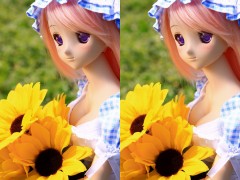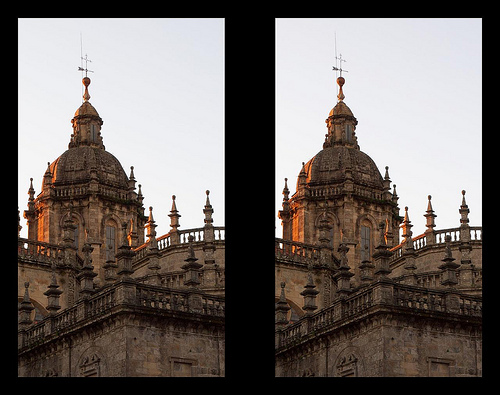
Stereo photography (or stereoscopy) or 3D photography as it is generally referred to as is a lot of fun. It unravels the thrill of visualizing the three dimensional model of the scene captured on 2D photographic frame. Stereoscopy simply refers to a technique for creating or enhancing the illusion of depth in an image.
Photography as an art employs several techniques to add third dimension to the captures. For instance, photographs including varying proportions, perspectives, textures and gradients introduce depth in the photographs but stereoscopy stands out distinct among all the techniques. Stereoscopy enables the viewer to perceive the scene or subject as real life object with an infused sense of 3D view.
Have you experienced this so called illusion of depth? Let’s get straight to it! The magic behind the perception of depth in two dimensional images lies in the principle of stereoscopic vision — the way human beings perceive the world around them with two eyes. The human eyes captures two images of an object, i.e. right eye perceives the angle of view stretching far right and the left eye tries to focus more on the left edge. Our intelligent brain then combines the two views to produce a single image which inherits the depth perception to introduce the sense of three dimensional reality. This principle acts as the founding pillar for stereoscopy or 3D photography.
Just like human eyes perceive two slightly different views of the image and then the brain combines the two images to give the sense of depth, 3D/ Stereo photography uses the stereo pair of images to create the illusion of depth.
Stereo pair is a pair of slightly distinct images placed side by side. It is a pair of two different images, representing two perspectives of the same object, with a minor deviation exactly equal to the perspectives that both eyes naturally receive in binocular vision. The two images are then placed in a tricky manner to hallucinate the viewers to experience the illusion of depth. This is what you have to achieve when shooting the stereo images.
How to shoot stereo images?
There are three distinct ways to shoot stereo images.
- Using two cameras: Place the two cameras as close as possible and in the same horizontal plane. Tune the cameras with same settings and release the shutter simultaneously. The camera to the left will capture the image as viewed by left eye and the camera to the right will frame the right-eye perspective.
- With one camera: Place the camera on the tripod and take two shots of the still subject by slightly varying the perspective (in between 1 to 2 inches at the most) without altering the composition and camera settings.
- Investing in a 3D camera: If you are passionate about 3D photography and your budget allows for this, investing in a 3D camera or the cameras featuring 3D photo mode is a good idea.The 3D cameras helps you in recreating what you wee with your eyes. While 3D cameras out-bursts the 3D feature by providing 3D lens, processor, LCD and advanced 3D modes, the 3D photo mode allows you to take consecutive shots while panning the camera from left to right (which you can later use to create stereo pair).
After taking the shots, process the images in the image editor targeted at stereoscopic photography. You can proceed with your image editor by placing the images side by side. Place the two images on the same canvas with the shot taken for right eye placed on the right side and the image shot with left eye perspective placed to the left side (as in the following example). This is all it takes to create a stereo pair.
How to view stereo images?
It requires a special viewing technique and a little bit of training to experience the illusion of depth. While stereoscopes and 3D glasses makes it fairly simple to view 3D photos, here are two free-viewing techniques which enable you to perceive three dimensional reality without any external aid. The techniques described here contrast with the normal viewing. When you look at an object, the line of sight converge at the same location where the object is placed. The human eyes automatically adjust the line of sight and point of convergence to produce an image of the object and send signal to brain. When viewing the stereo pair of images, you have to employ special techniques and view beyond or before the point of convergence to visualize three dimensional imaginary view of the scene in the stereo pair.
- Parallel Viewing: Parallel viewing, also known as divergence is the technique where you maintain a parallel line of sight. This is to say that your left eye is focusing on the left image and right eye is focusing on right image. As you keep staring at the images, you will get double vision because each eye is now trying to focus on both the images individually. You will thus be able to view four blurred images of which the middle ones will overlap to form a stereo image. Hold the line of sight and concentrate on image formed in the center to visualize three dimensions in the image. You can try it out with this stereo pair of the Cathedral.
- Cross Eye Technique: If you are not able to visualize 3D with parallel viewing you can try out with cross-eye technique. Unlike parallel viewing, in cross-eye technique you need to view the left image with right eye and right image with left eye. You can use the tip of a pen or pencil to help you cross the eyes. Place a pen horizontally in between the two images and try to focus on the tip. As you concentrate on the tip of the pen you will slowly observe that the two images overlap to form a third image in the center. The center image is stereo. Focus on the center image so that you get a clear three dimensional vision. Try the cross eye technique with this stereo pair of orchids.
Note: It is difficult to visualize the stereo effect at the very first instance. If you managed to view the stereo image in the first go, congratulations! If you were not able to visualize, don’t lose heart. It just requires a little bit of practice to train your eyes to visualize the 3D effect.
Have fun and enjoy the thrill of 3D visualization. And watch out this space for some great stereo pairs to train your eyes to visualize the illusion of depth. Other than enjoying the 3 dimension reality in photographs, this is a great exercise for the eyes too!





I haven’t managed to see the third dimension. :( And what about 3D pictures which don’t require special training or glasses. Do they even exist?
One more thing. When you close one eye, and take a look around (a room, for example), you’ll still be able to enjoy 3D space. Why is that not possible (?) when you are looking at 2D pictures?